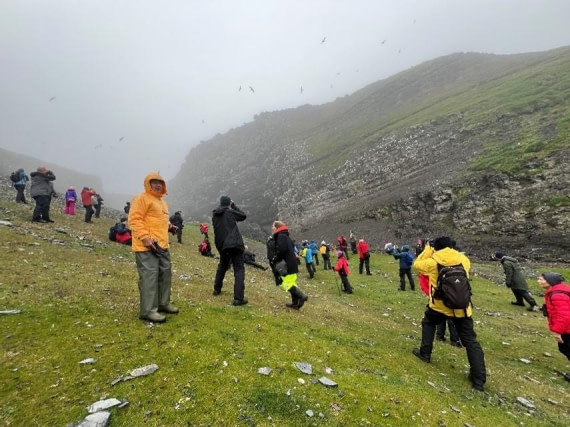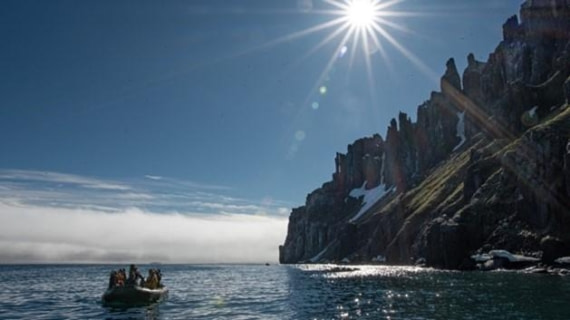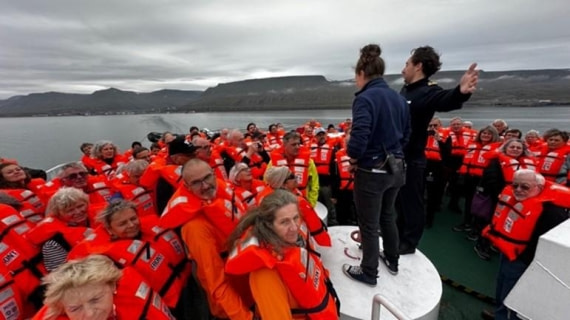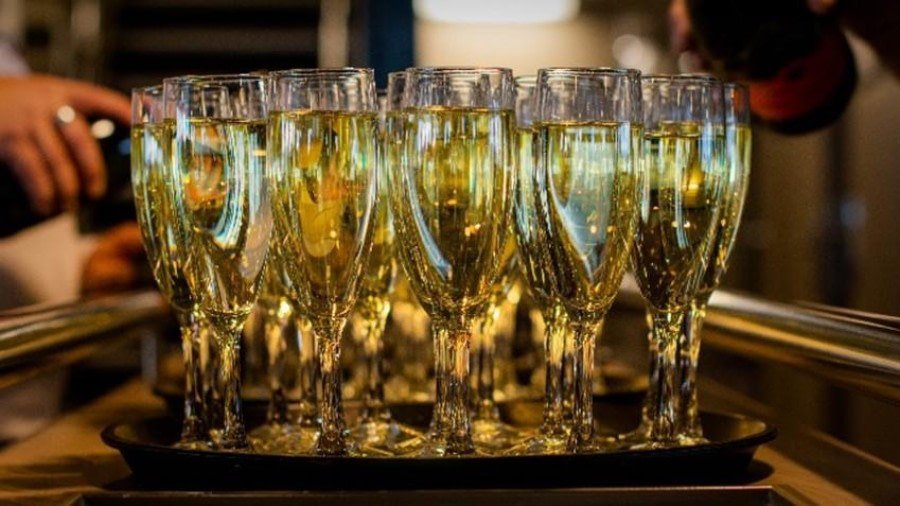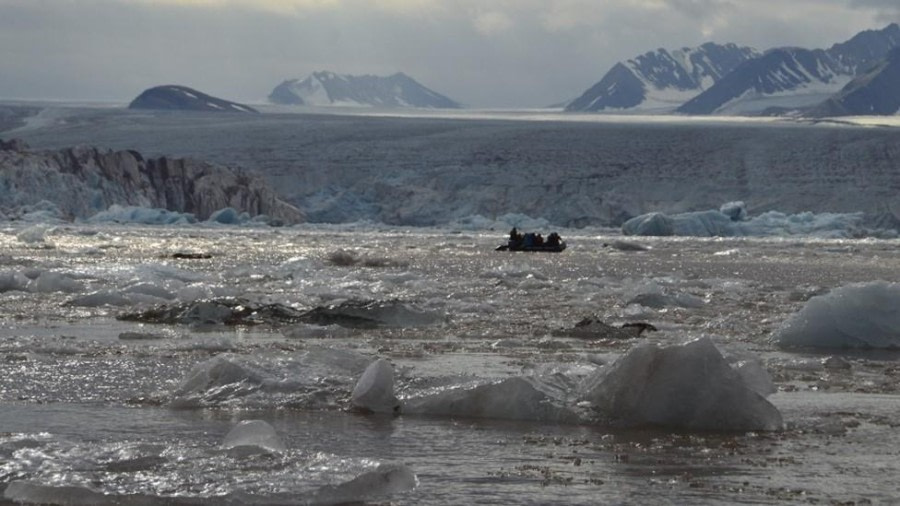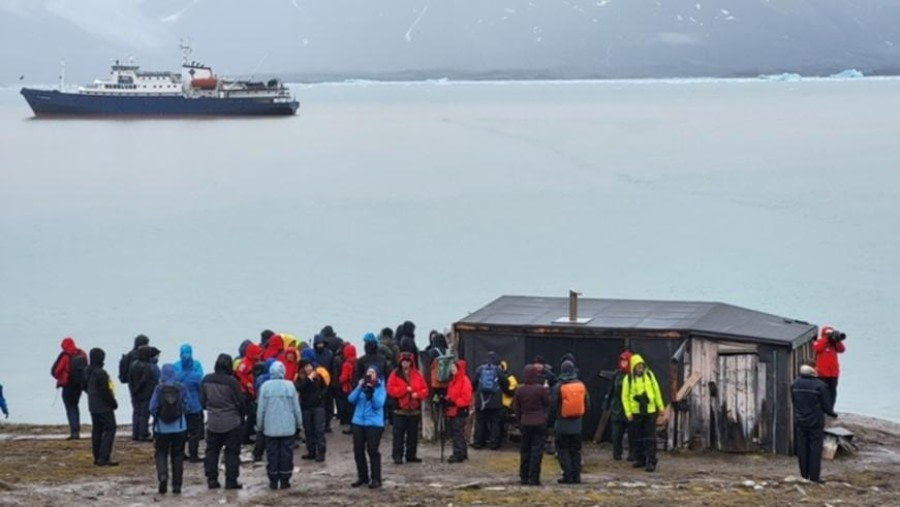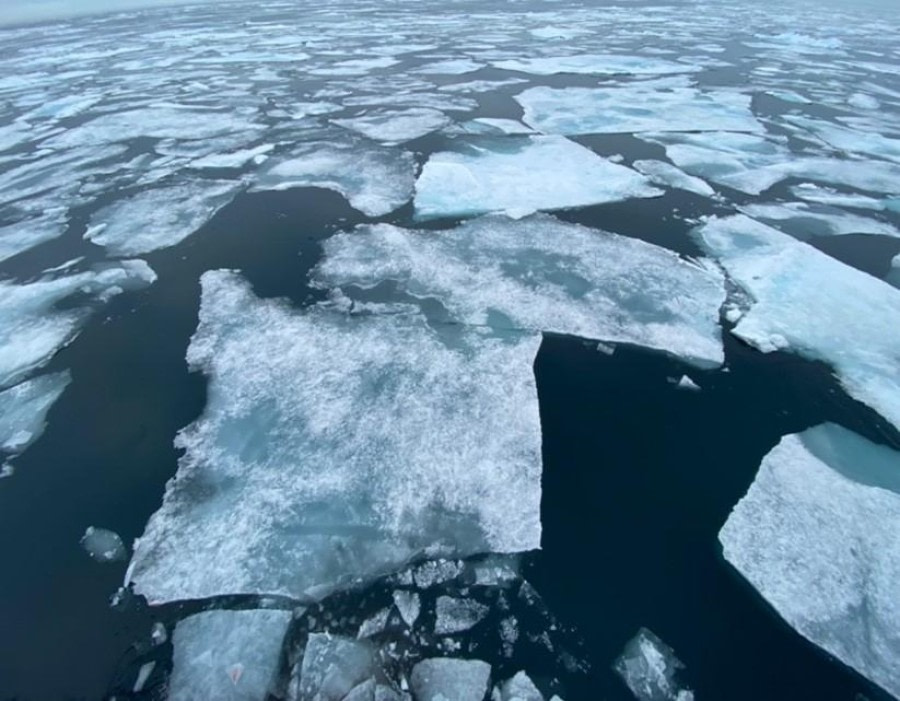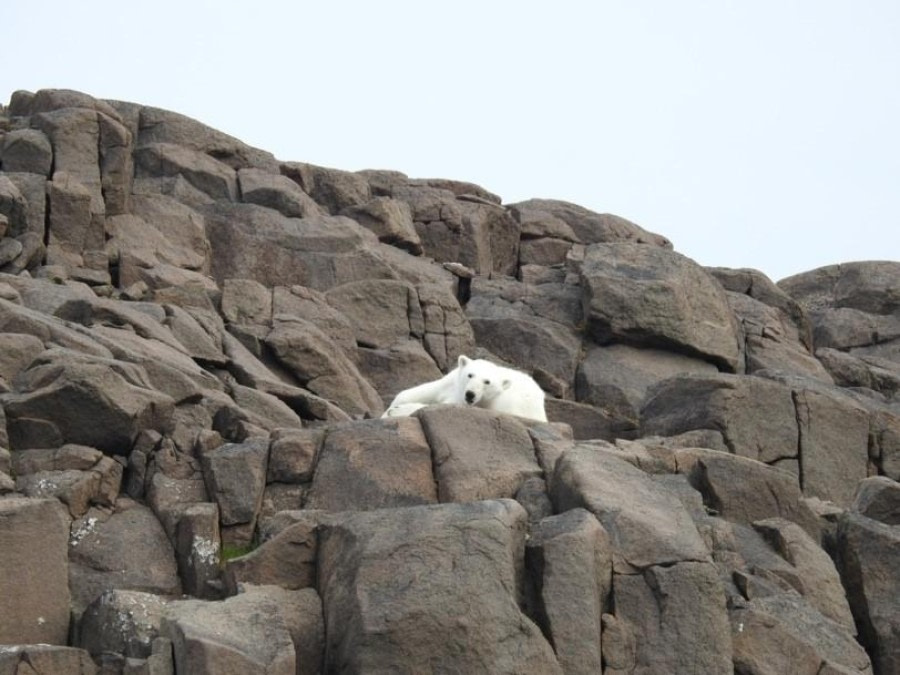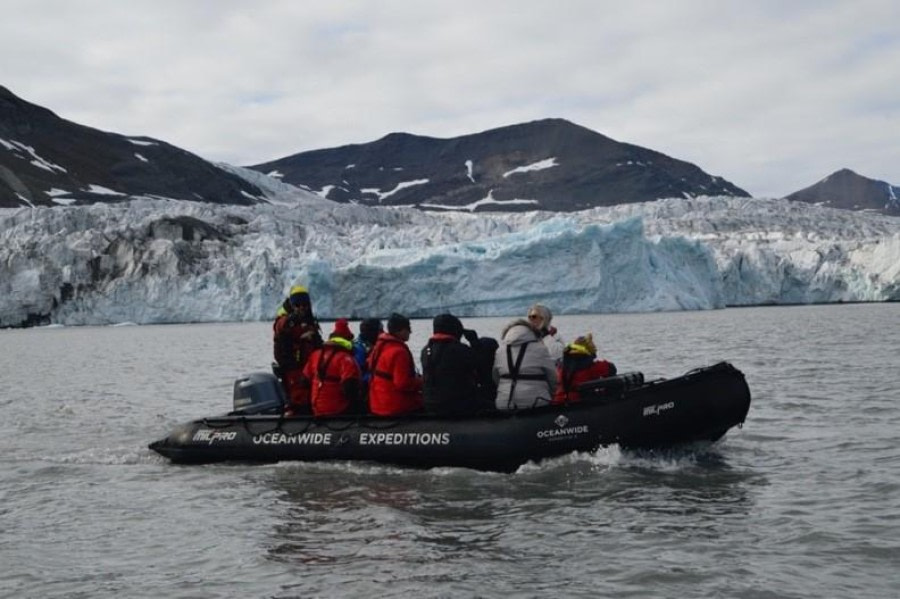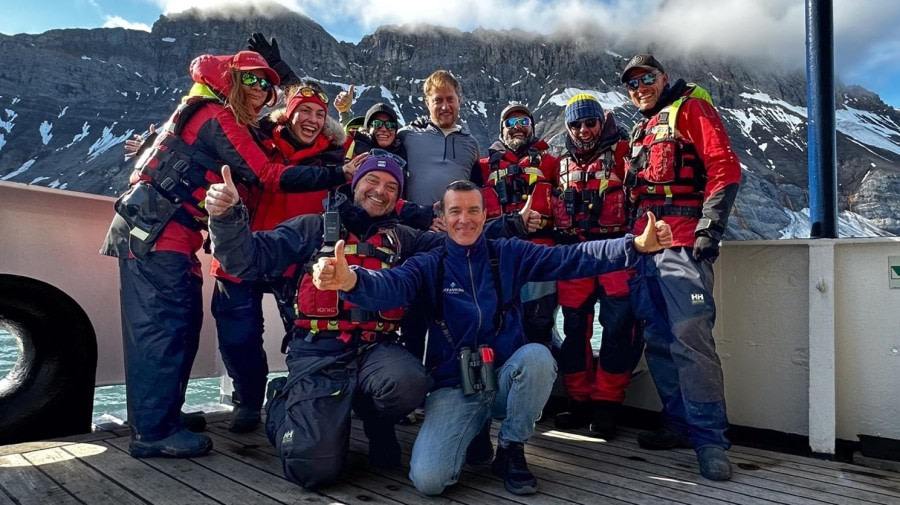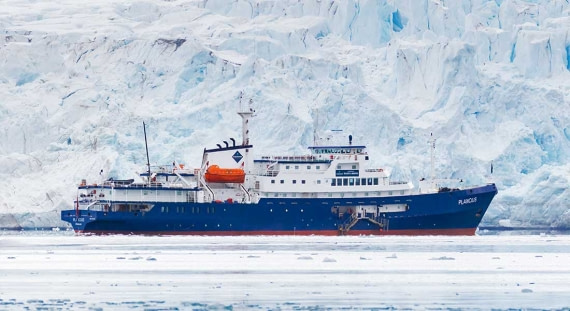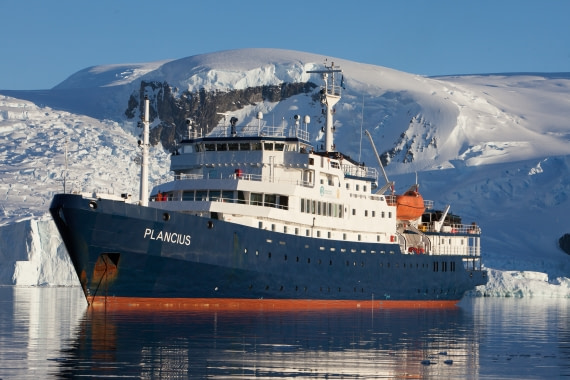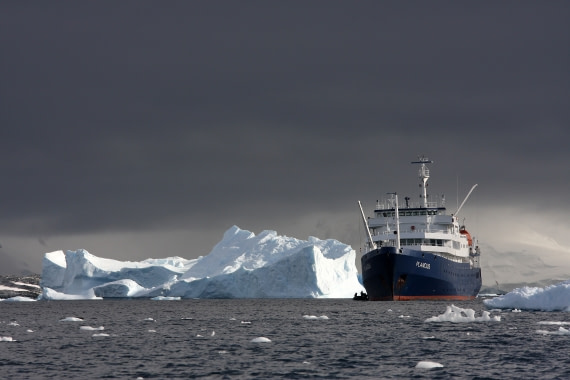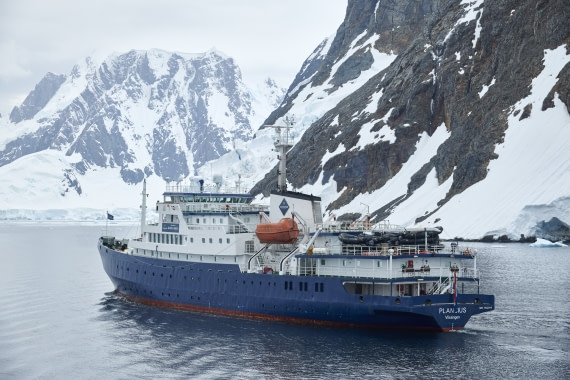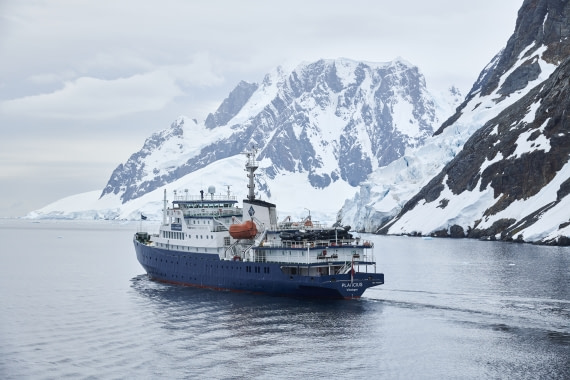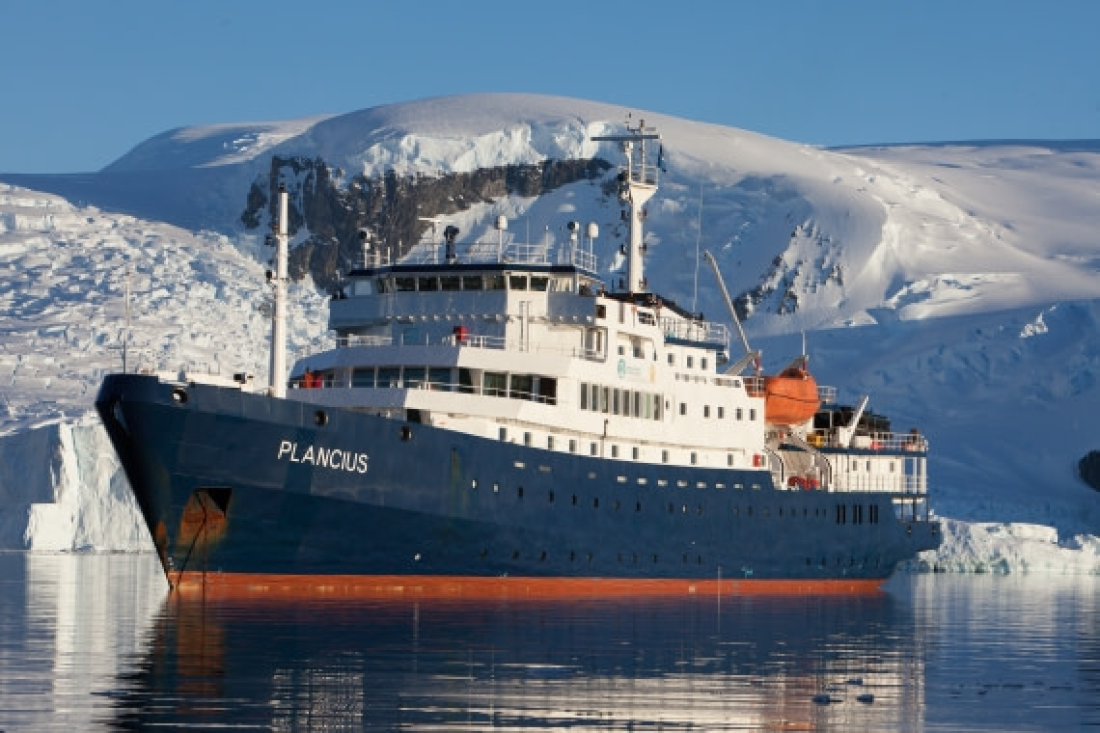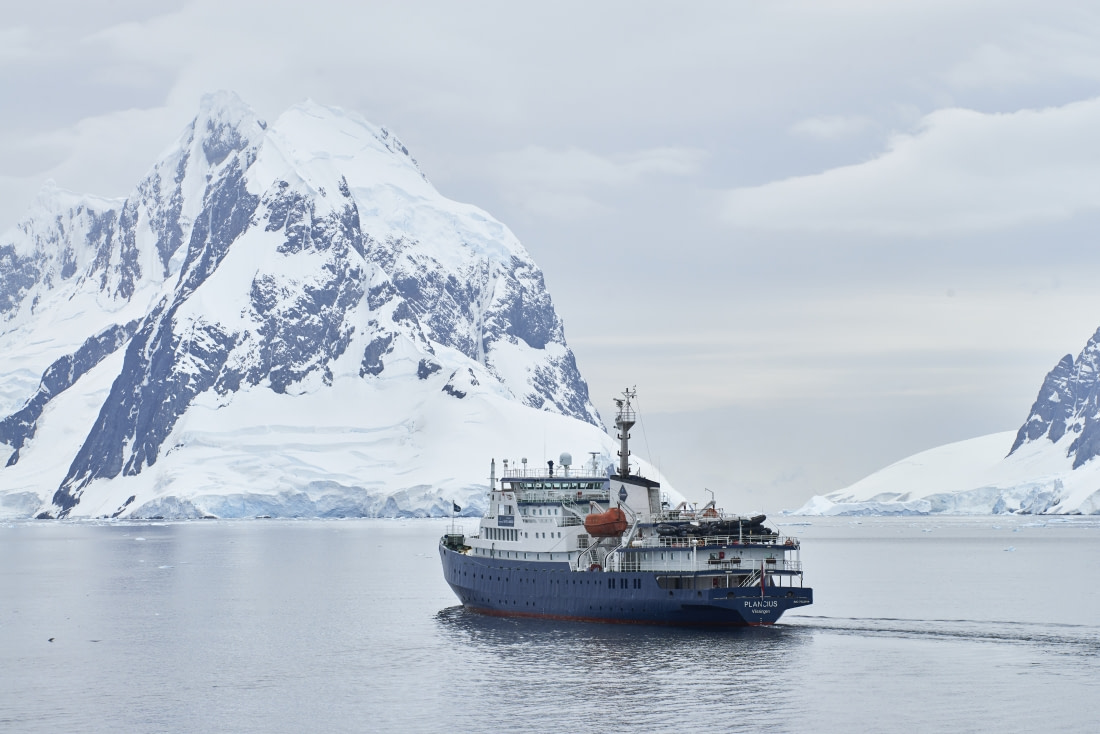| Date: |
30.07.2024 |
| Position: |
77°01.0’N / 016°04.8’E |
| Wind: |
NE 1 |
| Weather: |
Cloudy |
| Air Temperature: |
+10 |
Rounding the southernmost point of Spitsbergen, we entered the majestic Hornsund this morning. Thick fog benches covered many small bays along the approximately 30km long fjord. Our initial plan was to visit Gåshamna, but Christophe took us to Hyrneodden instead since the visibility there seemed very poor. Once we arrived on land, the fog slowly lifted, and the incredible panorama surrounding us opened. Like every time, we got to choose between three different hiking options on land.
The more arduous tour was accompanied by Pierre and Paolo and consisted of a steep uphill hike that led us to a point with the best views over the bay. The medium hike with Emily, Jakub, and Andi, got to see some Arctic skuas and took a closer look at permafrost stone patterns while enjoying a nice panorama of the nearby glacier. Today, the leisurely stroll was very popular, and many of us just wanted to take our time to soak up the stunning landscape around us. As usual, the walk was guided by Christophe, additionally, we had Esther and Koen, who kept us safe and told us a lot of interesting stories about the vegetation in this area and the “breathing cycle” of the earth, how small patches of moss push away even large rocks when the water that they contain freezes in winter and therewith expands. We learned that we found ourselves in the high-arctic zone here, the so-called “Svalbard Poppy zone.” Even though this vegetation zone is named after this hardy little flower, they are difficult to find; after a good scan of the area, we finally found a couple of fine specimens. Besides this iconic plant, we even discovered tiny Polar Willows, miniature trees creeping over the ground.
We all returned to the landing site after our walks to witness a truly spectacular sight: The Polar Plunge! The brave passengers among us stepped outside their comfort zone, removed their warm layers of clothing, and ran into the ice-cold fjord! Many of us stayed ashore to watch the show.
After all the swimmers had embraced the elements, we returned to the comfort of our dear Plancius, where a hot shower and a delicious lunch awaited us.
In the afternoon, we went out on our Zodiacs for the last time on this journey, which took us all around Spitsbergen, the largest island of Svalbard. On our small boats, we circumnavigated large icebergs and stopped in front of the towering mountain walls surrounding Vestre Burgerbukta. We learned more about the fascinating geology of this place and why the waterfalls here are red, due to the iron oxide in the rocks gets washed out with the water. We advanced to the end of the bay, where we reached the beautiful glacier Paierlbreen. Many of the place names here actually have Austrian origin, as the fjord was first mapped on an expedition led by Count Hans Wilczek in 1872. Some names are derived from members of his expeditions, others from friends and family, such as Luciakammen and Mariekammen, after Wilczek’s two daughters.
In front of the majestic glacier, we enjoyed the Arctic silence one last time before we made our way back to the ship. There, we shortly met the crew of the Sysselmester, the Governor of Svalbard, who regularly checks whether the expedition ships have all of their correct paperwork and are abiding by the rules. We passed without problems!
The evening program for this last day of our incredible tour consisted of a glass of prosecco for most of us and some beautiful speeches by Captain Ernesto and Christophe. As a beautiful memory for us to take home, Koen prepared a video full of memories of our voyage that we watched all together! Many of us had tears in our eyes. We enjoyed our last dinner together before we packed our bags and started preparing for our journey home.


